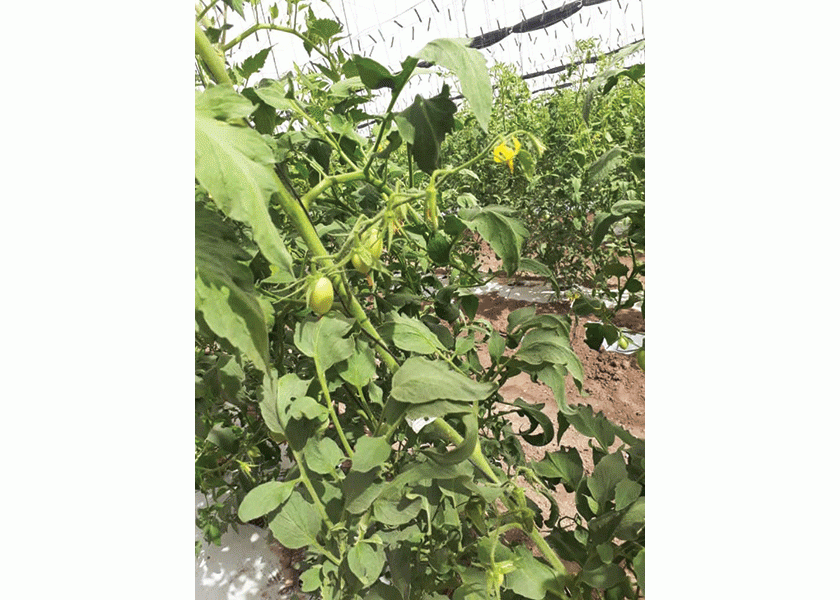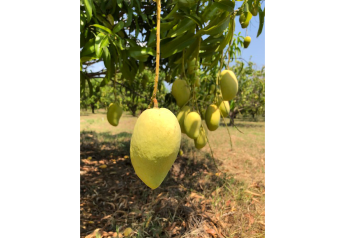Early tomato market for West Mexico shows strong prices

More tomatoes crossed the border at Nogales, Ariz., during the 2019-20 season than any other commodity, according to the U.S. Department of Agriculture.
Tomato importers received more than 1 billion pounds of tomatoes, and they expect good volume and good quality this season as well.
Tomato prices as of the first half of November were a bit higher than normal, said Manny Gerardo, salesman for Bernardi & Associates Inc., Nogales, Ariz.
Last year, f.o.b. prices for two-layer cartons of vine-ripe tomatoes ranged from $15.95-17.95 during the second week of the month, according to the USDA. Prices for the same period this year ranged from $20-23.
Gerardo attributed the higher prices to fewer tomatoes planted in California and Florida, and to weather systems in the Northwest that shut down some U.S. homegrown deals sooner than usual.
He expected higher f.o.b. prices to continue until more volume comes up from Mexico.
“We’re going to see high prices until at least the first of the year,” he said.
Bernardi & Associates ships roma, cherry, grape and round tomatoes.
Nogales, Ariz.-based Calavo Growers Inc. sources roma and round tomatoes from the state of Jalisco from mid-April until mid-January and from the state of Sinaloa from December to May, said Brian Bernauer, director of tomato sales and operations for Calavo.
“We overlap nicely,” he said.
The Jalisco program now is underway, and he expects the Sinaloa deal to start the first or second week of December.
Bernauer said he expected to see good volume of high-quality tomatoes this season.
“So far, the weather has been really, really good,” he said Nov. 10.
The company offers various pack styles for its round tomatoes including one- and two-layer options for retailers and a 25-pound carton for wholesalers.
Bernauer touts the program as “one grower, two regions, 12 months.”
That’s important, he said, because it helps ensure consistent quality, food safety and packing.
Nogales-based Divine Flavor was “going strong” with roma and grape tomatoes from Nayarit in Central Mexico in November and planned to start conventional and organic tomatoes out of Sinaloa starting in mid- to late December, said Michael DuPuis, quality assurance and public relations coordinator.
By the end of December, the company should have conventional roma, beefsteak and grape tomatoes from Sinaloa and organic tomatoes-on-the-vine and organic and conventional Magnifico sweet grape tomatoes from Culiacan, he said.
Weather has been good in Sinaloa, and DuPuis expected an on-time start in December.
Tomato importers are not happy with the 2019 Suspension Agreement with the U.S. Department of Commerce’s International Trade Administration that requires stepped up inspections, but most seem to be living with the agreement.
“Even though the costs are definitely more, it’s overall working pretty efficiently,” Bernauer said.
“The USDA and their crew have done a good job of expediting and making sure that the loads are getting inspected, and they’re ready to be shipped out.”
Divine flavor is a major importer of table grapes, so it was not difficult for the company to adapt to the inspections for tomatoes, DuPuis said.
“Our team has a good process of adapting and learning these new requirements,” he said. “For us, I don’t think it’s been a problem so far.”
The company also had guidance from the Nogales-based Fresh Produce Association of the Americas, he added.
FPAA is not pleased with the added inspections, however.
“You’re putting in a barrier to trade that is not necessary,” said president Lance Jungmeyer.
“The pass rate on these inspections so far this season is over 99%,” he said.
“(Inspections are) only there to slow things down,” he said. “There is not a quality problem.”
Requiring more inspections for tomatoes puts a strain on resources needed to check other commodities that require USDA inspections, such as citrus, avocados, onions and grapes, he said,
The inspections are supposed to occur within 24 hours of arriving at the border, Jungmeyer said.
“For a vine-ripe tomato, you’re taking one day of its shelf life off just to do an inspection.”
Related content:
West Mexico early tomato market shows strong prices
West Mexico distributors hope for uptick in business
Trade talk with FPAA's Lance Jungmeyer







